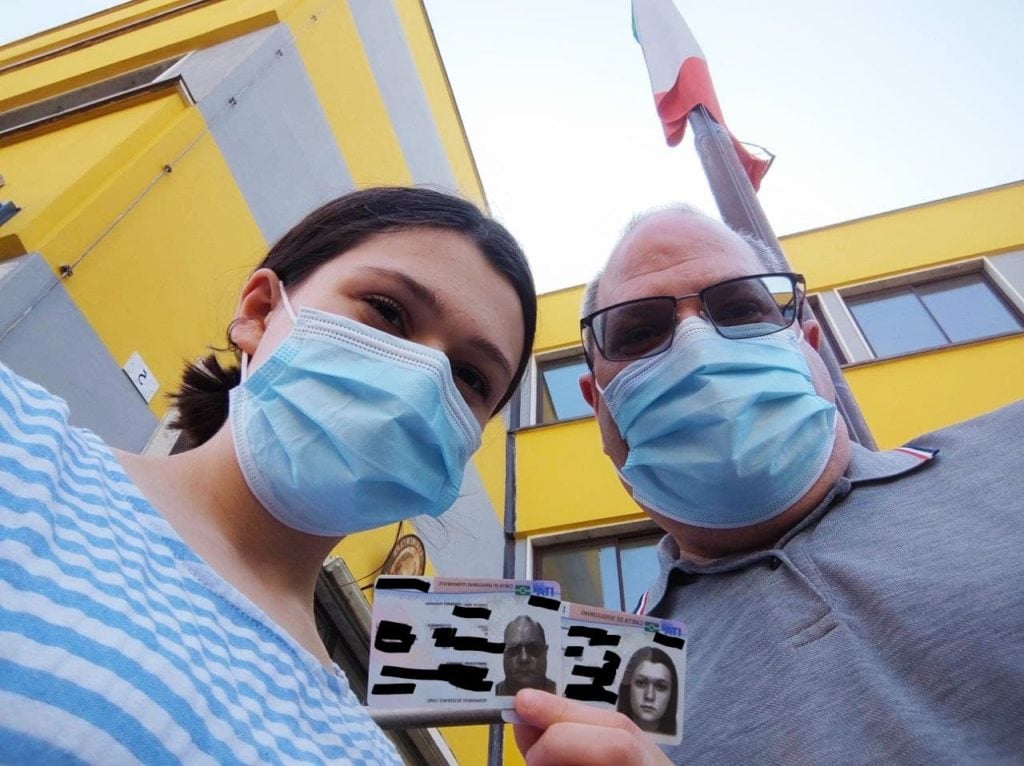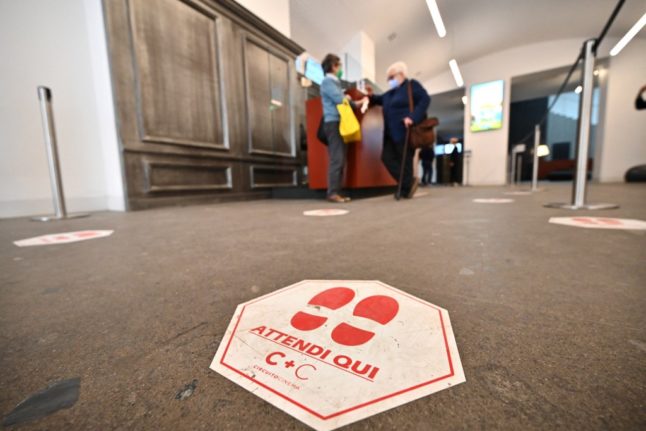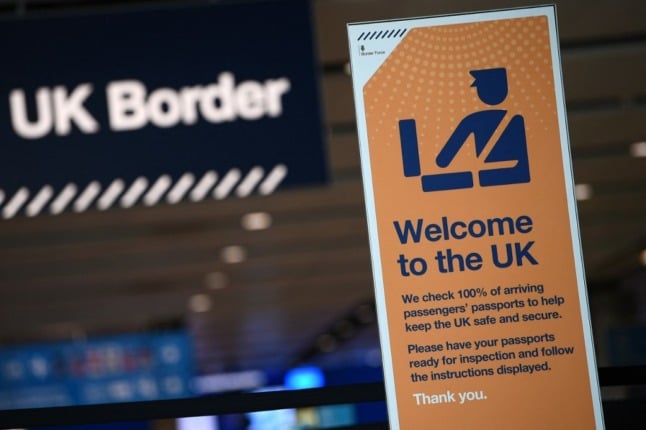What’s the process?
Thanks to Brexit, all British nationals who moved to Italy before the UK’s withdrawal from the EU took effect need to be able to prove that they were resident here before the Brexit transition period concluded at the end of 2020.
A new carta di soggiorno, a microchipped card that shows your residency status, ID photo and fingerprints, is available to British citizens who were lawfully living in Italy before January 1st 2021.
While getting the new card is not compulsory, it’s the simplest way to demonstrate that your rights in Italy are protected by the Withdrawal Agreement. Many Brits have reported being asked for it when trying to access services or complete paperwork in Italy, and while strictly speaking officials should accept other proof of residency, in practice not having the card can lead to hold-ups.
READ ALSO: Why Brits in Italy are being urged to apply for the new Brexit residence card now
Applying for the card involves making an appointment with your local police immigration office, or questura, paying an administrative fee at a post office, then going to the questura in person with proof of payment and evidence that you were resident in Italy before the Brexit deadline.
The most straightforward proof is an attestazione di iscrizione anagrafica that specifically states you were registered with your local town hall before the Brexit deadline. But you can still apply for the card if you don’t have the attestazione, or even if you weren’t registered at all: you’ll just have to produce additional documents to demonstrate you fulfilled the requirements for residency here before January 1st 2020.
If you applied to register before this date but haven’t yet received confirmation, you should wait until the registry office (anagrafe) has finalized your residency before applying for the card.
EXPLAINED: What are the different documents Italy’s British residents need after Brexit?
Once your application is processed, your card will be delivered to a police station where you can go and pick it up.
Find the British Embassy’s guide to applying for the carta di soggiorno here. If you need extra help with your application, support is available from the International Organisation for Migration (IOM): email [email protected] or call 800 684 884.
Only UK nationals who were resident in Italy by December 31st 2020 are eligible for the new card. Brits who move after that date will need a visa: find out the requirements here.
How long does it take to get an appointment?
It will vary depending on how many resources your questura has and how many other Brits are applying in your area.
Police stations are supposed to allow Brits to book an appointment for their residence card application via email or an online form. Check this list for your questura‘s email address, or try searching “questura + carta di soggiorno + Regno Unito + [name of your town]”.
READ ALSO:
- How British citizens in Italy are overcoming bureaucratic problems
- The myths you shouldn’t believe about Brits’ rights in Italy after Brexit
- OPINION: Brits in Italy aren’t victims of a ‘hostile environment’ but a system that wasn’t ready for Brexit
Once you’ve contacted the questura, you should be emailed the details of your appointment, as well as instructions for what to do if you can’t make it.
From the accounts we’ve heard, you could hear back within a day or have to wait several months – and as for the appointment itself, it could be weeks or months after that. It all depends on where you live.
Among The Local’s writers, two requested appointments in January: one in Rome got an appointment in late February, one in Bari is still waiting to attend hers in June.
Four months after I asked for it, I've finally got a Questura appointment to apply for my Italian Brexit residence card… in June.
If I'm lucky, I might get the actual card sometime before the UK rejoins Europe.
— Clare Speak (@ClareinItaly) April 28, 2021
How long will I have to spend at the questura?
Once you have your appointment, in theory your visit to the questura should be quick: around 15-30 minutes to confirm your details, show your documents, sign some forms, hand over your ID photos and payment receipt, and scan your fingerprints.
Some Brits have reported having to wait despite having an appointment, so show up early and allow extra time.
READ ALSO: ‘What I learned when I applied for the Brexit residence card for Brits in Italy’
You can maximise your chances of getting in and out quickly by double-checking you have everything you need. Remember that you’ll have to go to a post office beforehand to pay the €30.46 admin fee by postal order (bollettino), and to get some new passport-sized photos if you don’t have four recent ones.
Find a list of everything you should bring in the Italian Interior Ministry’s guide (in English).
Multiple people have encountered problems with their fingerprint scans, with several applicants called back to the questura to give their prints a second or even third time. When you go, be sure to rub in any hand sanitizer gel completely before using the scanner, and ask to wait a few minutes afterwards to see if the system rejects your prints.
How long until my application is processed?
Again, it’s a postcode lottery.
You can check on the status of your application by going to the state police’s website and entering the reference number written on your application receipt: it will either tell you that it’s being processed (displaying a red cross) or is ready for delivery (a green tick).
Just writing an update on Brexit residence cards for Brits in Italy & what should I find but that my own has graduated from 'being processed' to 'ready for delivery'!
…but apparently delivery could take several more weeks & the promised SMS alert may or may not ever arrive 🙃 pic.twitter.com/flYlW3ejEl— Jessica Phelan (@JessicaLPhelan) May 5, 2021
Some of the first cards were issued to British residents in Milan, who picked them up at the end of March. Several others who applied in January or February are getting their cards now, averaging a wait of two to three months.
But after an initial lag while the design was finalized and the new cards sent into production, the process appears to be picking up speed. Some people have reported that their applications were processed within a month of their appointment at the questura, or in a few cases even less.
Here’s a sample of recent waiting times reported in the citizens’ rights Facebook group Beyond Brexit:
- Pistoia, Tuscany: “Within a week”
- Sondrio, Lombardy: “Two and a bit weeks”
- Rome, Lazio: “Three weeks”
- Ascoli Piceno, Marche: “Four weeks”
- Novara, Piedmont: “A month”
- Bergamo, Lombardy: “Five weeks”
Then when do I get my card?
The wait isn’t quite over once your application has the green tick. You’ll be instructed to wait for an SMS that tells you when the card has arrived at a police station for you to go and pick it up, which may require another appointment.
Some people report that they waited several weeks without receiving a text message: if you haven’t heard anything after a week or two, email or call your questura for an update.
You’ll either be offered an appointment or told when you can queue up to collect your shiny new carta di soggiorno, which you should check carefully for any errors before you leave the police station.

It should remain valid for either five years (if you’ve been living in Italy for less than five years by the time you apply) or ten years (if you’ve already lived in Italy for five years or more).
Is there a deadline to apply?
The Italian government hasn’t set a deadline for getting the new carta di soggiorno.
The IOM will continue to offer assistance with applications throughout 2021: find more information on their Facebook page. Anyone who faces difficulties in accessing services in Italy without a card is advised to contact the British Embassy via their Living in Italy website.



 Please whitelist us to continue reading.
Please whitelist us to continue reading.
I applied for an appointment for the third time on 27March to the Questura at Massa and my appointment is for 7 September.
The whole process from sending the first PEC email to getting the card has taken us about 15 weeks in Macerata.
We applied for our biometric card in Siracusa Sicily on the 17th of February. We received it on May 12th.
I got my appointment at the Questura a week after I applied for it in January. I even got an email from one of the impiegati telling me how to get to the offices. They treated me like some sort of VIP when I arrived, ushering me past the queues, etc. I felt quite guilty I must say. However since then, I’ve just waited and waited … (Julie, Torino)